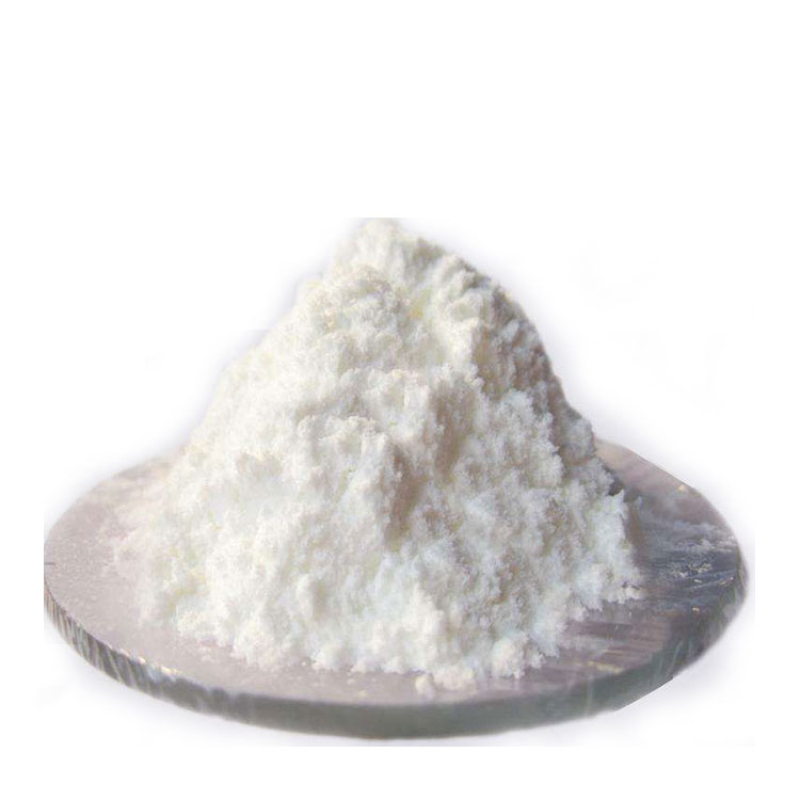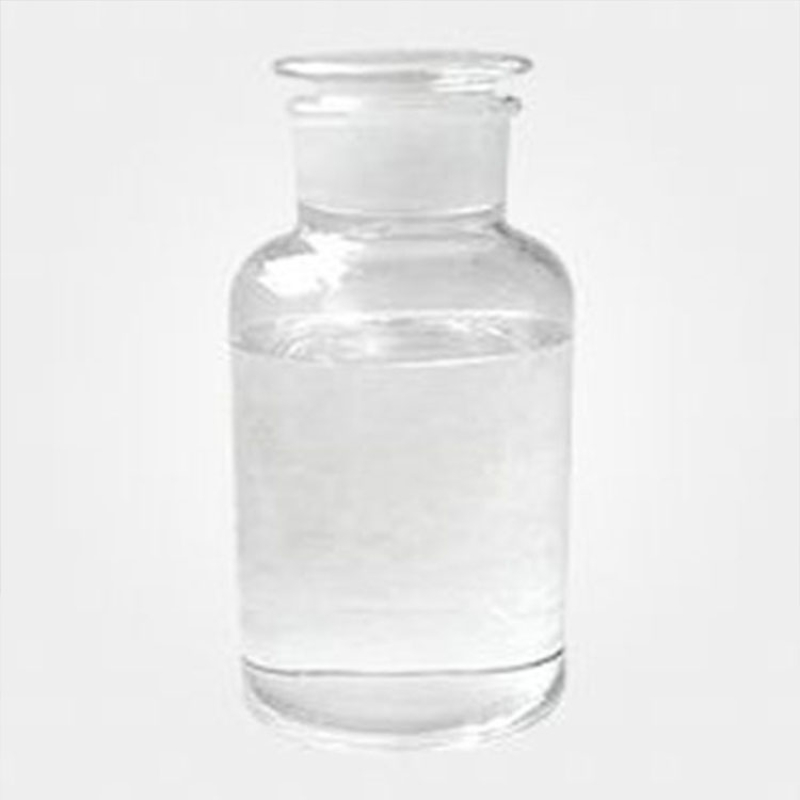Products Description of Octanoic acid CAS#124-07-2Caprylic acid is a medium-chain fatty acid. It has 8 carbons in its chain, so it is also called n-caprylic acid. Caprylic acid is considered an essential fatty acid, which is necessary for the proper functioning of the human body.
Contact Now
Products Description of Saccharin CAS#81-07-2Pure saccharin is a non-toxic, non-caloric, non-nutritious sweetener that is not absorbed by the human body. Taking advantage of its sweet taste, it is used as a food additive to replace sugar. As a food additive, saccharin has no nutritional value to the human body except that it causes a sweet feeling in the taste buds and the sweetness of the taste can meet the requirements of consumers.
Contact Now
Products Description of BISMUTH SULFIDECAS#1345-07-9Bismuth sulfide is brown-yellow powder or crystal, with a specific gravity of 7.39. It decomposes at 685℃. It is insoluble in water and ethyl acetate, but soluble in nitric acid and hydrochloric acid.BISMUTH SULFIDE Chemical PropertiesMelting point 685°C (dec.)density 7.7 g/mL at 25 °C(lit.)solubility insoluble in H2O; soluble in acid solutionsform LumpSpecific Gravity7.7color GrayWater Solubility Insoluble in water.
Contact Now
Products Description of Octadecanamide CAS#124-26-5Stearamide emulsion is a white emulsion. The product is non-toxic, non-polluting, non-hazardous and green and environmentally friendly.
Contact Now
Products Description of Dodecylamine CAS#124-22-1Dodecyl primary amine is also known as 1-aminododecane, laurylamine, and dodecylamine. It is colorless or white crystal. This product is weakly alkaline and can form salts with inorganic or organic acids. Can be quaternized. Reacts with ethylene oxide and can be acetylated. Chemicalbook can be added to unsaturated hydrocarbons. This product can be oxidized with peroxide. Reacts with halogenated carboxylic acids to generate amphoteric compounds. Reacts with carboxylic acid chloride to generate amides.
Contact Now
Products Description of Bis(2-ethylhexyl) phosphate CAS#298-07-7 Di(2-ethylhexyl) phosphate is a chemical substance. It is a viscous oily liquid with strong acidity.
Contact Now
Products Description of 2-Amino-2-methyl-1-propanol CAS#124-68-5White crystal block or colorless liquid. Miscible with water, soluble in alcohol, irritating to eyes and skin. There is the synthesis of surfactants. Vulcanization accelerator. Acid gas absorbent.
Contact Now
Products Description of 2-Methylpiperazine CAS#109-07-9Colorless crystals, hygroscopic, with a typical amine odor, easily soluble in water and acetone.2-Methylpiperazine Chemical PropertiesMelting point 61-63 °C (lit.)Boiling point 155 °C/763 mmHg (lit.)density 0.817 g/cmrefractive index 1.4378 (estimate)Fp 149 °Fstorage temp. Keep in dark place,Inert atmosphere,Room temperaturesolubility 435g/lpkapK1:5.62(+2);pK2:9.60(+1) (25°C)form Crystalline Powder, Crystals and/or Chunkscolor White to yellowPH11-12 (50g/l, H2O)Water Solubility 78
Contact Now
Products Description of Naphthalene-2-sulfonic acid CAS#120-18-3White to slightly brown leaf-shaped crystals. Melting point 91℃ (anhydrous), 83℃ (trihydrate), 124℃ (monohydrate). Soluble in water, alcohol and ether.
Contact Now
Products Description of 2-Methylpiperazine CAS#109-07-92-Methylpiperazine is a chemical substance with the molecular formula C5H12N2.
Contact Now
Products Description of 4-(2-Tetrahydropyranyloxy)phenylboronic acid CAS#182281-01-2Phenylboric acid is a chemical substance with the chemical formula C11H15BO4.4-(2-Tetrahydropyranyloxy)phenylboronic acid Chemical PropertiesMelting point 117-124 °CBoiling point 411.3±55.0 °C(Predicted)density 1.21±0.1 g/cm3(Predicted)storage temp. Keep in dark place,Sealed in dry,Room Temperaturesolubility soluble in Methanolform powder to crystalpka8.63±0.16(Predicted)color White to Light yellowCAS DataBase Reference182281-01-2(CAS DataBase Reference)Safety Information
Contact Now
2-Bromo-6-methoxypyridine Chemical PropertiesBoiling point 206 °C (lit.)density 1.53 g/mL at 25 °C (lit.)refractive index n20/D 1.559(lit.)Fp 220 °Fstorage temp. Inert atmosphere,Room Temperaturepka-1.04±0.10(Predicted)form Liquidcolor Clear colorless to goldenInChIInChI=1S/C6H6BrNO/c1-9-6-4-2-3-5(7)8-6/h2-4H,1H3InChIKeyKMODISUYWZPVGV-UHFFFAOYSA-NSMILESC1(Br)=NC(OC)=CC=C1CAS DataBase Reference40473-07-2(CAS DataBase Reference)Safety InformationHazard Codes Xi,T,XnRisk Statements 36/37/38-20/21/22Safety Statements 26-36WGK Germany
Contact Now
Products Description of Sodium MethoxideCAS#124-41-4Sodium methoxide is also called sodium methoxide. It is a kind of alcohol salt generated by methanol, with the chemical formula CH3ONa. It is a strong base commonly used in organic synthesis. Sodium methoxide is usually stored as a solution in alcohol solvents such as methanol and ethanol. It dissolves in ether to form a suspension, is sensitive to moisture, and decomposes into methanol and sodium hydroxide when it comes into contact with water: CH3ONa+H2O→CH3OH+NaOH. Sodium methoxide products come in two forms: solid and liquid.
Contact Now
Products Description of Dinonylnaphthalenesulfonic acid CAS#25322-17-2Dinonylnaphthalenesulfonic acid is a chemical substance with the molecular formula C28H44O3S.Dinonylnaphthalenesulfonic acid Chemical PropertiesBoiling point 94-99 °Cdensity 0.852 g/mL at 25 °Crefractive index n20/D 1.465Fp 30 °Fstorage temp. 2-8°Csolubility H2O: insolubleCAS DataBase Reference25322-17-2(CAS DataBase Reference)EPA Substance Registry SystemNaphthalenesulfonic acid, dinonyl- (25322-17-2)Safety InformationHazard Codes F,Xn,NRisk Statements&nb
Contact Now
Products Description of 2-Thiophenecarboxylic acid CAS#527-72-02-Thiophenecarboxylic acid is a kind of colorless crystal.
Contact Now
Products Description of 2-chlorobenzoic acid CAS#118-91-22-Chlorobenzoic acid, almost white coarse powder. The melting point is 142℃, and the density (20℃) is 1.5449/m3.
Contact Now
Products Description of 2-Hydroxynicotinic acid CAS#609-71-22-Hydroxynicotinic acid is an organic intermediate.
Contact Now
Products Description of 2-Phosphonobutane-1,2,4-tricarboxylic acid CAS#37971-36-12-Phosphonobutane-1,2,4-tricarboxylic acid (PBTC) is the latest generation of internationally popular phosphonic acid. It is one of the most widely used and best-performing products in the compounding of high-efficiency scale and corrosion inhibitors. This product is particularly suitable for water conditions with high temperature, high hardness, high alkalinity, high pH, and high concentration ratio.
Contact Now
Products Description of 2-Acrylamide-2-methylpropanesulfonic acid CAS#15214-89-82-Acrylamido-2-methylpropanesulfonic acid (AMPS) is a water-soluble sulfonic acid group with strong anionic properties, which makes it salt-resistant, high-temperature-resistant, dye-affinity, conductive, ion-exchangeable and highly tolerant to divalent cations; the amide group makes it have good hydrolysis stability, acid and alkali resistance and thermal stability; and the active double bond makes it have addition polymerization properties, and it can produce copolymers with a variety of hydrocarbon monomers
Contact Now
Products Description of 2,7-naphalenedisulfonic acid CAS#1655-35-2 Sodium 2,7-naphthalene disulfonate, white powder, is mainly used in organic synthesis and dye industry.2,7-Naphthalenedisulfonic acid disodium salt Chemical Propertiesform powder to crystalcolor White to Light yellow to Light orangeCAS DataBase Reference1655-35-2(CAS DataBase Reference)EPA Substance Registry System2,7-Naphthalenedisulfonic acid, disodium salt (1655-35-2)Safety InformationHazard Codes XiRisk Statements 36/37/38Safety Statements 37/39-26Hazard Note IrritantHS Code 2904
Contact Now
Orthophosphoric Acid CAS#7664-38-2Phosphoric Acid, with the chemical formula H₃PO₄ and CAS number 7664-38-2, is a versatile inorganic acid that plays a crucial role in a multitude of industries.
Contact Now
Phosphoric Acid(industrial grade) CAS#7664-38-2Phosphoric Acid, with the chemical formula H₃PO₄ and CAS number 7664-38-2, is a versatile inorganic acid that plays a crucial role in a multitude of industries.
Contact Now
Products Description of [1,2,4]TRIAZOLO[1,5-A]PYRIMIDINE-2-CARBOXYLIC ACID CAS#202065-25-6[1,2,4]Triazolo[1,5-a]pyrimidine-2-carboxylic acid is a chemical.Molecular Formula is C6H4N4O2.[1,2,4]TRIAZOLO[1,5-A]PYRIMIDINE-2-CARBOXYLIC ACID Chemical Propertiesdensity 1.79±0.1 g/cm3(Predicted)form powderpka-4.67±0.41(Predicted)color CreamSafety InformationHazard Codes XiRisk Statements 43Safety Statements 36/37HazardClass IRRITANTHS Code 2933998090Product Application of [1,2,4]TRIAZOLO[1,5-A]PYRIMIDINE-2-CARBOXYLIC ACID CAS#202065-25-6[1,2,4]Triazolo
Contact Now
Products Description of 5-Bromo-2-pyridinecarboxylic Acid CAS#30766-11-15-Bromo-2-pyridinecarboxylic acid is a chemical substance with the molecular formula C6H3BrNO2.5-Bromo-2-pyridinecarboxylic Acid Chemical PropertiesMelting point 173-175°CBoiling point 319.5±27.0 °C(Predicted)density 1.813±0.06 g/cm3(Predicted)storage temp. Keep in dark place,Sealed in dry,Room Temperaturesolubility Soluble in methanol.form Powderpka3.41±0.10(Predicted)color White to off-whiteInChIKeyMNNQIBXLAHVDDL-UHFFFAOYSA-NCAS DataBase Reference30766-11-1(CAS DataBase Reference)S
Contact Now
























![[1,2,4]TRIAZOLO[1,5-A]PYRIMIDINE-2-CARBOXYLIC ACID CAS#202065-25-6](https://sdluxicdn.huazhi.cloud/cdn/ff/oLGUsn18qGlr6xFpfvjw88ruuxs7GrtvunO9beYlPGM/1717583118/public/styles/chanpinzhutu/public/2024-06/photobank%20%282%29_1.jpg?itok=-1jJhH8M)









